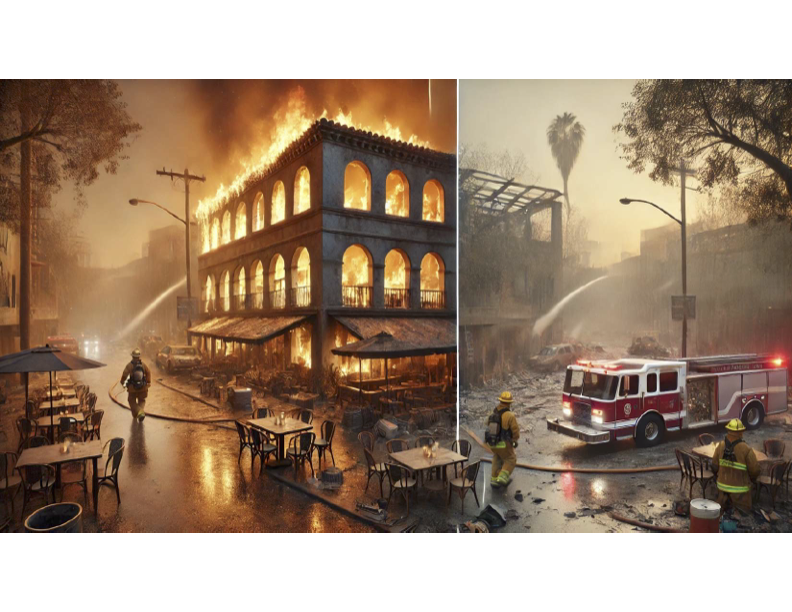The recent wildfires in the Los Angeles area are already having a significant impact on the restaurant industry, disrupting operations, damaging infrastructure, and affecting local economies. Below are key areas where the restaurant industry has been affected:
1. Operational Disruptions
-
Power Outages: Rolling blackouts and power cuts, common during wildfire seasons, force restaurants to close temporarily or invest in costly backup generators.
-
Evacuations: Mandatory evacuations in fire-affected areas often lead to temporary or permanent closures of restaurants, especially small, family-owned establishments.
-
Road Closures: Wildfires often cause highway and road closures, disrupting supply chains and making it difficult for employees and customers to access restaurants.
2. Infrastructure Damage
-
Physical Destruction: Restaurants located in high-risk areas may suffer direct damage or total destruction from the fires, requiring costly rebuilding.
-
Smoke and Air Quality Issues: Poor air quality can deter diners from venturing out and also requires restaurants to invest in air filtration systems, particularly for outdoor dining spaces.
-
Water Contamination: Firefighting efforts and subsequent runoff may contaminate water supplies, impacting restaurant operations and forcing closures.
3. Economic Challenges
-
Revenue Loss: Many restaurants experience prolonged periods of reduced customer traffic, leading to significant revenue losses.
-
Increased Costs: Rising insurance premiums, maintenance costs for smoke damage, and the need for additional safety measures put financial strain on business owners.
-
Staffing Issues: Employees may lose their homes or face evacuation orders, making it difficult for restaurants to maintain adequate staffing levels.
4. Supply Chain Disruptions
-
Local Suppliers Affected: Farms, vineyards, and local food producers often face devastation from wildfires, affecting the availability and cost of fresh produce and wine.
-
Increased Costs of Goods: The destruction of agricultural land leads to higher prices for key ingredients, further impacting restaurant profitability.
5. Community Impact
-
Loss of Gathering Spaces: Restaurants often serve as community hubs, and their closure can disrupt local social structures, particularly in smaller towns.
-
Recovery Delays: Recovery efforts for restaurants can be prolonged due to the scale of wildfire damage, leaving communities without essential dining and economic services.
6. Adapting to Challenges
-
Pivoting Operations: Some restaurants shift to delivery or takeout-only models during wildfires to maintain operations amid air quality concerns.
-
Community Support Initiatives: Restaurants unaffected by fires often collaborate to provide meals for first responders and displaced residents, fostering goodwill but adding strain to operations.
-
Technology Investments: Many establishments invest in digital ordering platforms and social media outreach to communicate with customers and mitigate revenue losses.
7. Long-term Implications
-
Insurance Issues: Some restaurants struggle to secure affordable wildfire insurance, leaving them vulnerable to future disasters.
-
Migration of Talent and Businesses: Repeated wildfire events may discourage restaurateurs and culinary talent from investing in fire-prone regions.
-
Resilience Planning: Wildfire-prone areas are seeing increased adoption of fire-resistant building materials and strategic landscaping to reduce future risks.
Conclusion
California's wildfires have created widespread challenges for the restaurant industry, from operational disruptions to long-term economic effects. However, the resilience and adaptability of restaurateurs, coupled with community and governmental support, are key to navigating and recovering from these crises.

